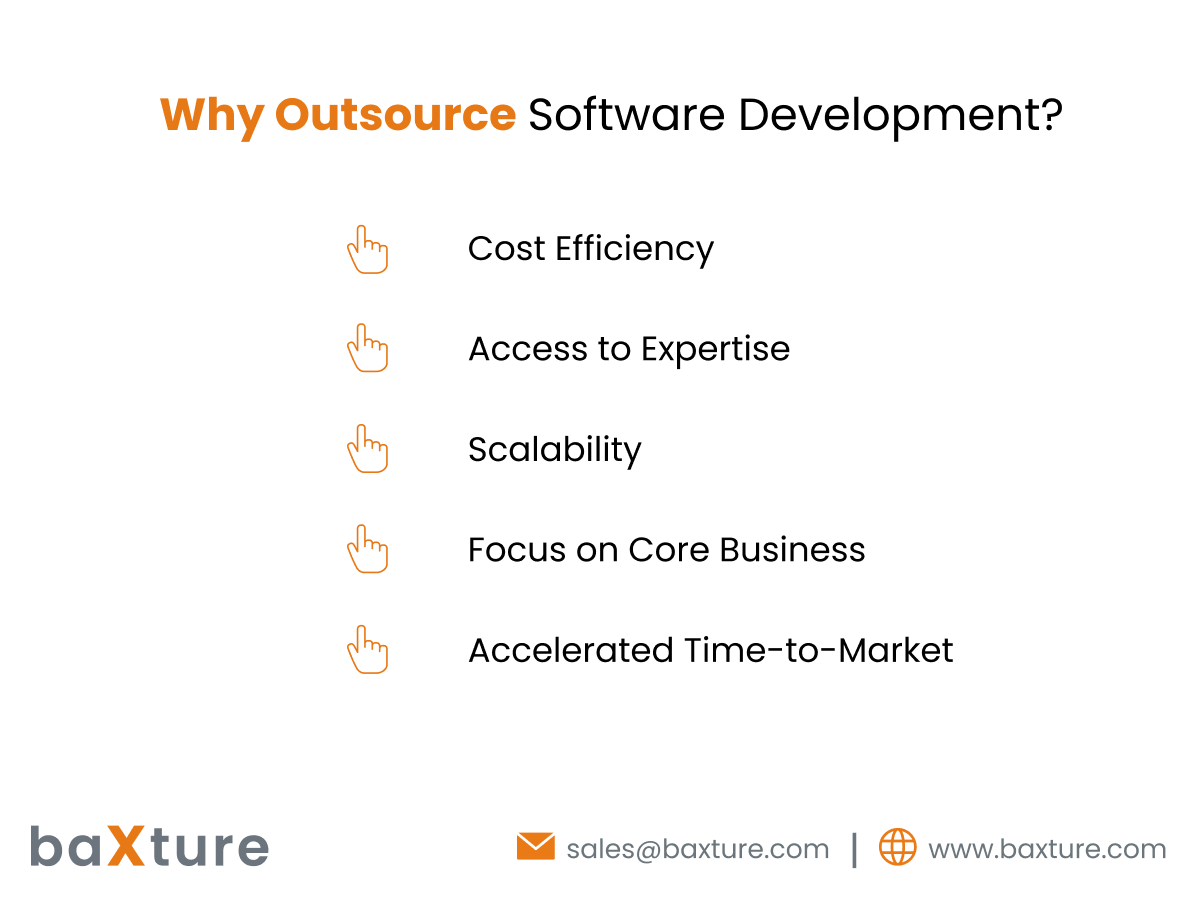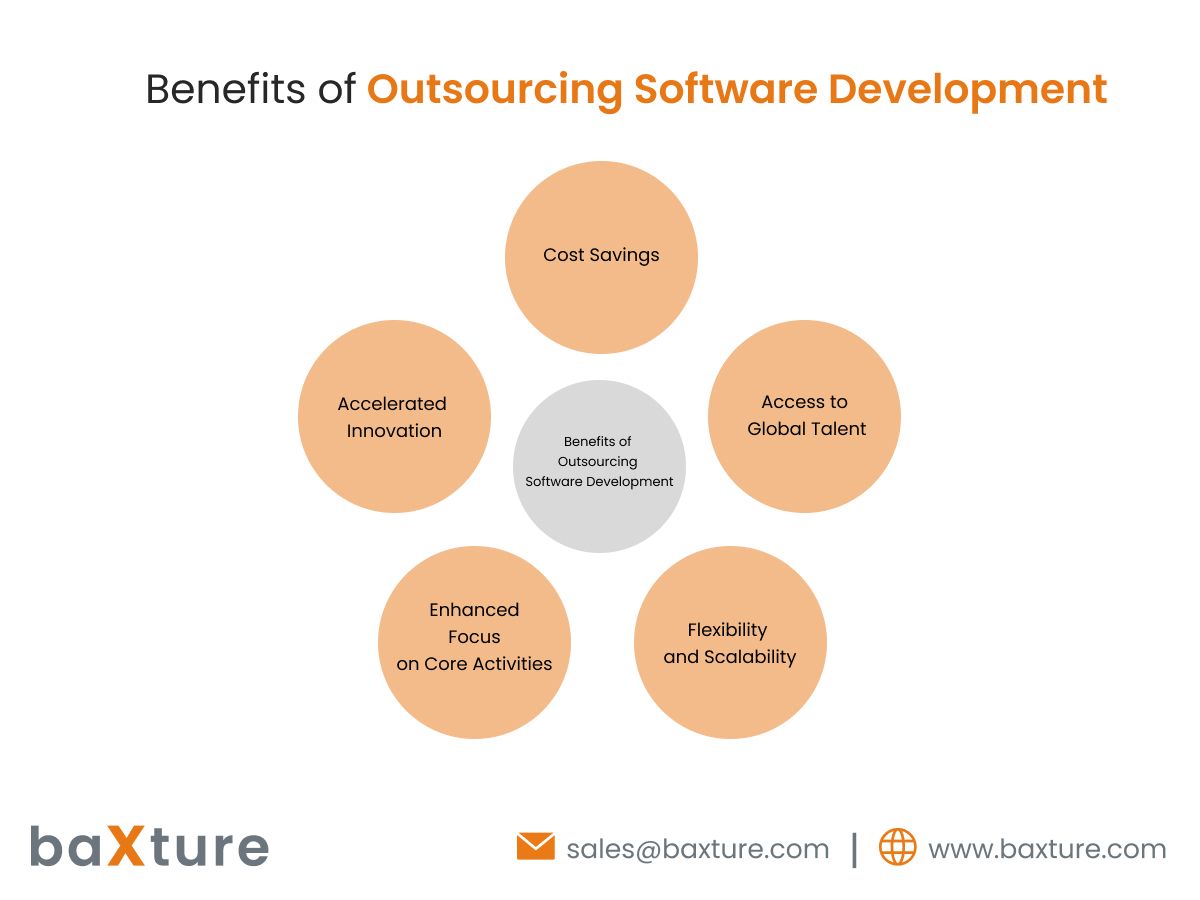Blogs
The Ultimate Guide to Outsourcing Software Development in 2024

Outsourcing software development has become a strategic approach for businesses aiming to enhance their technological capabilities, reduce costs, and access a global talent pool. As we step into 2024, the landscape of software development outsourcing continues to evolve, driven by advancements in technology, changing business needs, and a growing emphasis on agility and innovation. This guide provides a comprehensive overview of outsourcing software development, addressing key considerations, benefits, challenges, and best practices to help you make informed decisions.
Why Outsource Software Development?

- Cost Efficiency: Outsourcing allows businesses to leverage the cost advantages of global labor markets. By partnering with skilled developers in regions with lower labor costs, companies can significantly reduce their development expenses.
- Access to Expertise: Outsourcing provides access to a vast pool of experienced professionals with specialized skills. This expertise can be particularly valuable for projects requiring niche technologies or domain-specific knowledge.
- Scalability: Outsourcing offers the flexibility to scale development teams up or down based on project requirements. This adaptability helps manage resources efficiently and meet project deadlines.
- Focus on Core Business: By delegating software development tasks to external partners, businesses can concentrate on their core competencies and strategic initiatives, leading to enhanced productivity and growth.
- Accelerated Time-to-Market: Outsourcing can expedite the development process by utilizing the expertise and established workflows of experienced development teams, resulting in faster delivery of software products.
Key Considerations for Outsourcing Software Development

- Defining Project Scope and Objectives: Clearly outline the project's goals, deliverables, timelines, and success criteria. A well-defined project scope ensures alignment between your business objectives and the development team's efforts.
- Choosing the Right Partner: Conduct thorough research to identify potential outsourcing partners. Evaluate their technical expertise, industry experience, portfolio, client testimonials, and communication capabilities. Choose a partner that aligns with your project requirements and business values.
- Understanding Outsourcing Models: Different outsourcing models, such as onshore, nearshore, and offshore, offer varying advantages. Consider factors like time zone differences, cultural compatibility, and communication preferences when selecting an outsourcing model.
- Ensuring Data Security and Compliance: Protecting sensitive data and ensuring compliance with relevant regulations is paramount. Establish robust data security protocols and ensure your outsourcing partner adheres to industry standards and legal requirements.
- Effective Communication and Collaboration: Establish clear communication channels and collaboration tools to facilitate seamless interaction between your in-house team and the outsourced developers. Regular updates, meetings, and feedback loops are essential for maintaining project transparency and alignment.
- Setting Realistic Expectations: Define realistic milestones and deliverables to manage expectations. Be prepared for potential challenges and delays, and maintain open communication to address issues promptly.
Benefits of Outsourcing Software Development

- Cost Savings: Significant reduction in development costs due to lower labor rates and operational expenses in outsourcing destinations.
- Access to Global Talent: Collaboration with skilled professionals from around the world, bringing diverse perspectives and innovative solutions to your projects.
- Flexibility and Scalability: Ability to scale development teams based on project demands, ensuring efficient resource allocation and timely delivery.
- Enhanced Focus on Core Activities: Freed-up internal resources to focus on strategic business functions, driving growth and competitive advantage.
- Accelerated Innovation: Access to the latest technologies and development methodologies, enabling faster innovation and product development cycles.
Challenges of Outsourcing Software Development

- Communication Barriers: Time zone differences, language barriers, and cultural differences can hinder effective communication. Establishing clear communication protocols and leveraging collaboration tools can mitigate these challenges.
- Quality Control: Ensuring consistent quality and adherence to project specifications requires vigilant oversight and thorough testing. Regular quality checks and comprehensive testing processes are essential.
- Intellectual Property Risks: Protecting intellectual property rights and sensitive data is critical. Implementing robust legal agreements and confidentiality clauses can safeguard your intellectual property.
- Project Management Complexities: Managing an outsourced project requires strong project management skills to coordinate tasks, monitor progress, and address issues promptly. Clear project plans and regular status updates are crucial.
Best Practices for Successful Outsourcing

- Select the Right Partner: Choose a partner with a proven track record, relevant experience, and a strong portfolio. Evaluate their technical capabilities, communication skills, and cultural compatibility.
- Define Clear Requirements: Provide detailed project requirements, including specifications, timelines, and deliverables. Clear documentation minimizes misunderstandings and sets expectations.
- Establish Robust Communication: Use collaboration tools like Slack, Microsoft Teams, or Zoom for regular updates and meetings. Maintain open lines of communication to address issues and provide feedback.
- Implement Agile Methodologies: Agile methodologies like Scrum or Kanban facilitate iterative development, allowing for flexibility and continuous improvement. Regular sprints and feedback loops enhance project transparency and adaptability.
- Conduct Thorough Testing: Rigorous testing ensures the final product meets quality standards and performs as expected. Implement automated testing, continuous integration, and regular code reviews.
- Monitor Progress and Metrics: Track project progress using key performance indicators (KPIs) and metrics. Regularly review milestones, budgets, and timelines to ensure alignment with project goals.
FAQs
Q1: How do I ensure data security when outsourcing software development? A1: To ensure data security, establish clear data protection protocols, use encryption methods, and implement strict access controls. Verify that your outsourcing partner complies with relevant data protection regulations and industry standards.
Q2: How can I manage time zone differences with my outsourced team? A2: Manage time zone differences by setting overlapping work hours, using collaboration tools for asynchronous communication, and scheduling regular meetings at mutually convenient times. Clear communication and documentation help bridge time zone gaps.
Q3: What should I include in a contract with an outsourcing partner? A3: A comprehensive contract should include project scope, deliverables, timelines, payment terms, confidentiality clauses, intellectual property rights, data security measures, dispute resolution mechanisms, and termination conditions.
Conclusion
Outsourcing software development in 2024 offers significant advantages, from cost savings and access to global talent to accelerated innovation and scalability. By carefully selecting the right partner, defining clear project requirements, and implementing best practices, businesses can harness the full potential of outsourcing to drive growth and achieve their strategic objectives. As the outsourcing landscape continues to evolve, staying informed and adaptable will be key to maintaining a competitive edge in the dynamic world of software development.